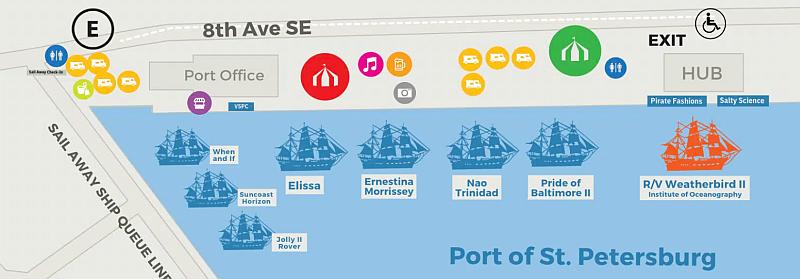 The city of St. Petersburg, FL is hosting Tallships® St.Pete, a four-day maritime festival from March 30 to April 2, 2023. The city is partnering with Tall Ships America to co-host a fleet of tall ships along the St Petersburg waterfront. Tall Ships® St. Pete will be the starting point for the Tall Ships Challenge® Gulf Coast Series. The tall ships will race from St.Petersburg to Galveston, TX, and on to Pensacola, FL.
The city of St. Petersburg, FL is hosting Tallships® St.Pete, a four-day maritime festival from March 30 to April 2, 2023. The city is partnering with Tall Ships America to co-host a fleet of tall ships along the St Petersburg waterfront. Tall Ships® St. Pete will be the starting point for the Tall Ships Challenge® Gulf Coast Series. The tall ships will race from St.Petersburg to Galveston, TX, and on to Pensacola, FL.
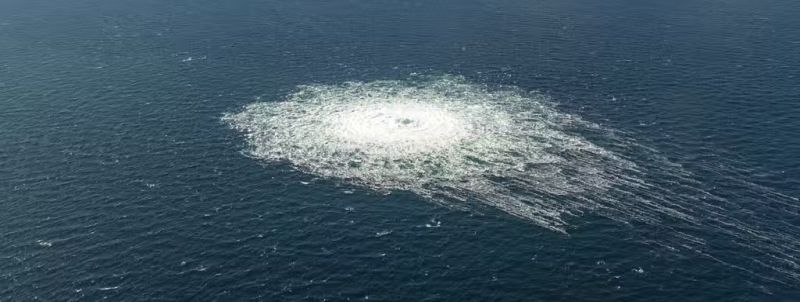 On September 26, 2022, a series of clandestine bombings resulted in underwater gas leaks from the Nord Stream 1 and Nord Stream 2 natural gas pipelines. Both pipelines were built to transport natural gas from Russia to Germany through the Baltic Sea, and are majority owned by the Russian majority state-owned gas company, Gazprom.
On September 26, 2022, a series of clandestine bombings resulted in underwater gas leaks from the Nord Stream 1 and Nord Stream 2 natural gas pipelines. Both pipelines were built to transport natural gas from Russia to Germany through the Baltic Sea, and are majority owned by the Russian majority state-owned gas company, Gazprom.
Who blew up the underwater natural gas pipelines is unclear. Fingers have been pointed at pro-Ukrainian groups, covert operators from the United States Navy, and most recently a Russian Navy mini-submarine.
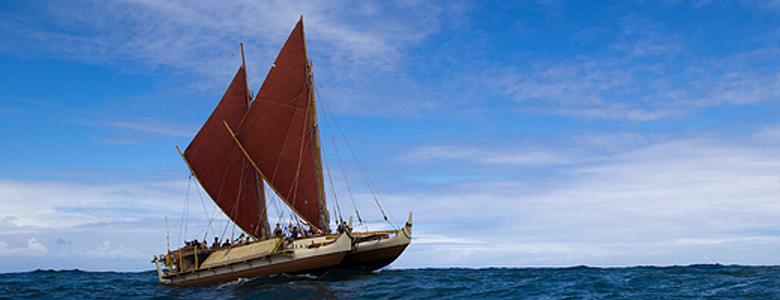 In June 2016, I had the pleasure of visiting Hōkūleʻa, a Polynesian double-hulled voyaging canoe, when she sailed into New York harbor in the third year of an epic voyage. Since her launch in 1975, Hōkūleʻa, had crisscrossed the Pacific using exclusively traditional navigation techniques. In May of 2014, Hōkūle‘a and its sister vessel, Hikianalia embarked from Oahu for “Malama Honua,” a three-year circumnavigation of the earth. It returned to port in Hawaii in June 2017. The journey covered 47,000 nautical miles with stops at 85 ports in 26 countries.
In June 2016, I had the pleasure of visiting Hōkūleʻa, a Polynesian double-hulled voyaging canoe, when she sailed into New York harbor in the third year of an epic voyage. Since her launch in 1975, Hōkūleʻa, had crisscrossed the Pacific using exclusively traditional navigation techniques. In May of 2014, Hōkūle‘a and its sister vessel, Hikianalia embarked from Oahu for “Malama Honua,” a three-year circumnavigation of the earth. It returned to port in Hawaii in June 2017. The journey covered 47,000 nautical miles with stops at 85 ports in 26 countries.
Now, Hōkūleʻa and her crew are preparing for an epic circumnavigation of the Pacific beginning this summer. The voyage — Moananuiākea: A Voyage for Oceans, A Voyage for Earth, 2023 to 2027 will be Hōkūleʻa’s 15th major voyage in her first 50 years.
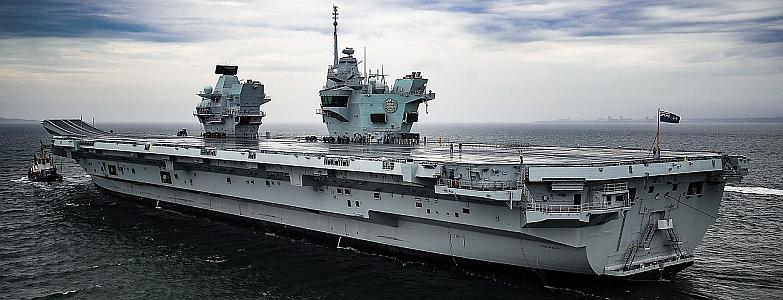 Late in August 2022, the Royal Navy’s newest aircraft carrier, HMS Prince of Wales, sailed from Portsmouth, UK bound for training exercises in the United States. She didn’t get very far. Two days after departing, the carrier broke down off the Isle of Wight. The external shaft coupling on the starboard propeller shaft failed, resulting in serious damage to the shaft and the propeller, and lesser damage to the rudder. After proceeding to an anchorage for inspection, the ship was escorted by tugs to a dry dock at Rosyth, Scotland, for necessary repairs.
Late in August 2022, the Royal Navy’s newest aircraft carrier, HMS Prince of Wales, sailed from Portsmouth, UK bound for training exercises in the United States. She didn’t get very far. Two days after departing, the carrier broke down off the Isle of Wight. The external shaft coupling on the starboard propeller shaft failed, resulting in serious damage to the shaft and the propeller, and lesser damage to the rudder. After proceeding to an anchorage for inspection, the ship was escorted by tugs to a dry dock at Rosyth, Scotland, for necessary repairs.
The repairs that were originally estimated to cost £3 million and were to be completed by spring have now soared to an estimated £20 million and the ship deployment is now projected to be in the autumn of 2023.
What happened on the HMS Prince of Wales? The failure of a propeller shaft coupling is extremely rare. The First Sea Lord described the failure as “unprecedented.” Indeed, few marine engineers can remember an instance of this happening.
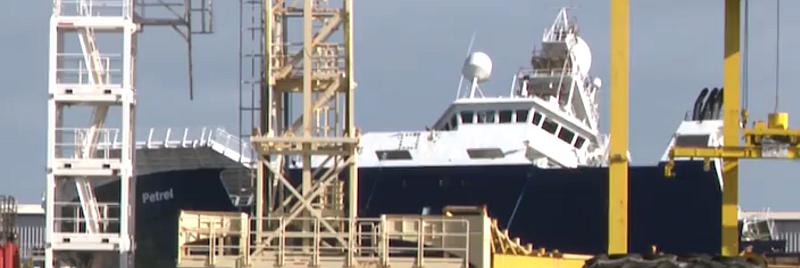 Yesterday, the research vessel Petrel rolled off her blocks in a drydock in Edinburgh, Scotland, leaving 35 people injured. BBC reports that twenty-three people were taken to the hospital and 12 were treated at the scene of the incident at Imperial Dock in Leith. The 3,371 GT research toppled over in strong winds rolling to an angle of 45 degrees.
Yesterday, the research vessel Petrel rolled off her blocks in a drydock in Edinburgh, Scotland, leaving 35 people injured. BBC reports that twenty-three people were taken to the hospital and 12 were treated at the scene of the incident at Imperial Dock in Leith. The 3,371 GT research toppled over in strong winds rolling to an angle of 45 degrees.
The Petrel was previously owned by Paul Allen, one of the founders of Microsoft. With Allen’s support, the vessel achieved an awe-inspiring record of underwater discoveries, locating a veritable fleet of lost naval shipwrecks.
 March is Women’s History Month, so it seems appropriate to remember the life and accomplishments of Susan Ahn Cuddy, a Korean American who would serve as the first female Asian-American officer in the US Navy and would also become the first female Navy gunnery instructor.
March is Women’s History Month, so it seems appropriate to remember the life and accomplishments of Susan Ahn Cuddy, a Korean American who would serve as the first female Asian-American officer in the US Navy and would also become the first female Navy gunnery instructor.
After leaving the Navy at the end of World War II, Cuddy also worked as an intelligence analyst and section chief at the National Security Agency and ran a think tank during the Cold War. She worked on top-secret projects for the Defense Department and supervised more than 300 scholars and experts in Russian affairs.
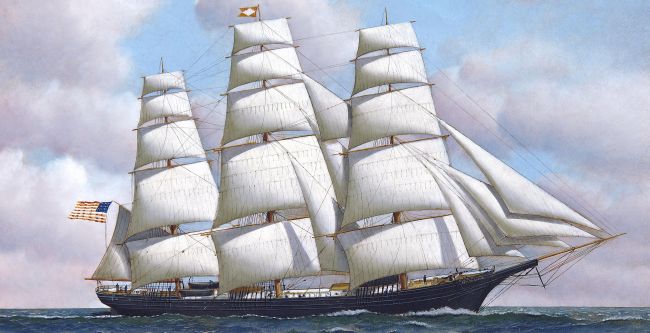 In honor of Women’s History Month, it is worthwhile remembering Eleanor Creesy, the navigator of the clipper ship Flying Cloud, who with her husband, Captain Josiah Creesy, set world sailing records for the fastest passage between New York and San Francisco. Aan updated repost.
In honor of Women’s History Month, it is worthwhile remembering Eleanor Creesy, the navigator of the clipper ship Flying Cloud, who with her husband, Captain Josiah Creesy, set world sailing records for the fastest passage between New York and San Francisco. Aan updated repost.
Eleanor Prentiss was born in 1814, in Marblehead, Massachusetts, the daughter of a master mariner, who taught his daughter the art and science of navigation. Eleanor knew how to use a chronometer and a sextant and how to make a sight reduction. In 1841, Eleanor married Captain Josiah Perkins Creesy. The couple sailed together on the ship Oneida in the China trade. Josiah was captain of the ship but Eleanor was the navigator.
 In recent years we have posted about the impact of massive mats of sargassum in the warmer waters of the Gulf of Mexico and the Atlantic. The brown buoyant seaweed has had a devastating impact on beaches across the east coast of Mexico, the Caribbean, Texas, and Florida.
In recent years we have posted about the impact of massive mats of sargassum in the warmer waters of the Gulf of Mexico and the Atlantic. The brown buoyant seaweed has had a devastating impact on beaches across the east coast of Mexico, the Caribbean, Texas, and Florida.
Recent reports are of a new 5,000-mile-wide sargassum bloom targeting Florida, that is so large, it can be seen from space.
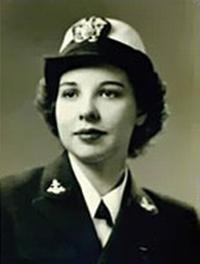 During Women’s History Month, it is a good time to honor Winnie Breegle who served in World War II as a WAVE (Woman Accepted for Volunteer Emergency Service) cryptographer and a Navajo “Code Talker”, who didn’t happen to be a Navajo. Ms. Breegle passed away at the age of 100 on January 3, 2023.
During Women’s History Month, it is a good time to honor Winnie Breegle who served in World War II as a WAVE (Woman Accepted for Volunteer Emergency Service) cryptographer and a Navajo “Code Talker”, who didn’t happen to be a Navajo. Ms. Breegle passed away at the age of 100 on January 3, 2023.
In 1941, Winnie Breegle, a 21-year-old farm girl from Ohio taught Latin, Spanish, and English in high school, and women with such backgrounds were highly sought after for work as coders. When she enlisted in the Navy, she was trained as a cryptographer.
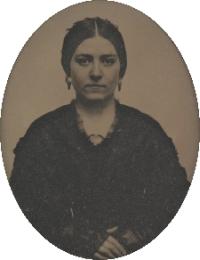 During Women’s History Month, it seems a good time to remember Mary Ann Brown Patten, the first woman to command an American merchant ship. An updated repost.
During Women’s History Month, it seems a good time to remember Mary Ann Brown Patten, the first woman to command an American merchant ship. An updated repost.
The year was 1856. The ship was the clipper ship Neptune’s Car, bound for San Francisco from New York City. Mary’s husband Captain Joshua had collapsed, suffering from “brain fever.” For 56 days, Mary took over the command and navigation of the ship. She faced down a mutiny and successfully brought the clipper into San Francisco. On her arrival, Mary was 19 years old and pregnant with her first child.
Mary was 16 when she married Captain Joshua Patten in 1853. He was 25 and a captain in the coastwise trade. The next year he was offered the captain’s berth on the clipper ship Neptune’s Car after the previous captain fell ill. He asked and was granted permission to bring his young wife on the voyage. With Mary at this side, Captain Patten made a fast passage from New York to San Francisco, then onward to China, London and back to New York.
 CNN reports that the United Nations has released a plan to offload 1 million barrels of oil off FSO Safer, a floating oil storage and offloading vessel, that has been moored off the coast of Yemen for more than 30 years.
CNN reports that the United Nations has released a plan to offload 1 million barrels of oil off FSO Safer, a floating oil storage and offloading vessel, that has been moored off the coast of Yemen for more than 30 years.
In an attempt to avert what could be one of the worst environmental disasters in history, the converted tanker was purchased by the UN to get the oil off the vessel.
As we posted in 2021, the ship has been held as a virtual hostage in the ongoing Yemeni civil war. A converted 400,000 DWT ultra-large crude carrier (ULCC), built in 1976, the ship now contains about 1.14 million barrels of oil valued at up to US$80 million. The ship has been progressively deteriorating due to a lack of maintenance and supplies, and many are concerned that the Safer is in imminent risk of sinking, fire, or explosion.
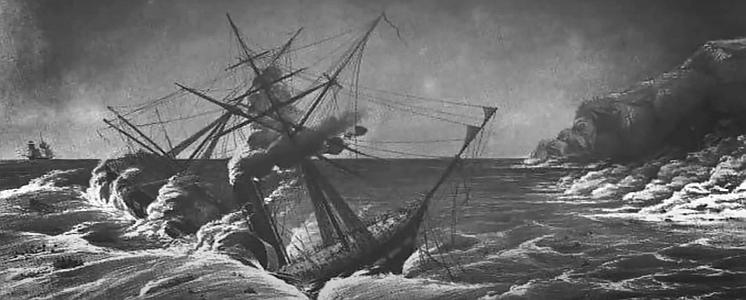 HMS Birkenhead was one of the first iron-hulled ships built for the Royal Navy. She was designed as a steam frigate, but was converted to a troopship before being commissioned in 1851.
HMS Birkenhead was one of the first iron-hulled ships built for the Royal Navy. She was designed as a steam frigate, but was converted to a troopship before being commissioned in 1851.
While transporting troops and a few civilians to Algoa Bay, the Birkenhead was wrecked on 26 February 1852 at Danger Point near Gansbaai, 87 miles (140 km) from Cape Town in the Cape Colony of South Africa. There were insufficient serviceable lifeboats for all the passengers, and the soldiers famously stood in ranks on board, thereby allowing the women and children to board the boats safely and escape the sinking.
Only 193 of the estimated 643 people on board survived, and the soldiers’ chivalry gave rise to the unofficial “women and children first” protocol when abandoning ship, while the “Birkenhead drill” of Rudyard Kipling’s poem came to describe courage in the face of hopeless circumstances.
Continue reading
A lone scientist on the coast of the Siberian Arctic finds that warming seas have taken a toll on the walrus migration, as documented in a film by Evgenia Arbugaeva and Maxim Arbugaev. “Haulout” is nominated for Best Documentary Short at the 2023 Academy Awards.
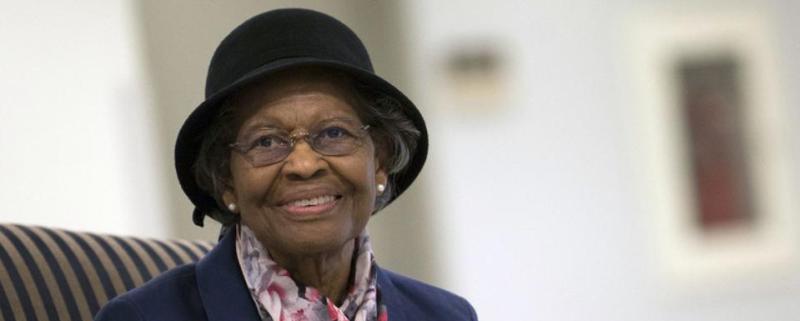 In honor of both Women’s History Month and Black History Month, an updated repost about Gladys West.
In honor of both Women’s History Month and Black History Month, an updated repost about Gladys West.
From maps to apps to chartplotters, we all rely on GPS these days, sometimes whether we realize it or not. Ethan Siegel wrote in Forbes: Unbeknownst to most people, however, the science underlying this technology was primarily developed by two people: Albert Einstein, whose theories of special and general relativity both play an important role, and Gladys West, a still-living and largely unheralded Black woman whose scientific contributions enabled us to understand geodesy and the shape of the Earth well enough to make GPS technology possible.
Now, we all know who Albert Einstien was. Gladys West, perhaps not so much. In honor of Black History Month, here is an updated repost about the Black female mathematician whose work for the Navy made a major contribution to the development of the Global Positioning System.
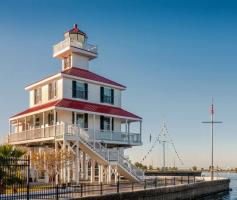
New Canal Lighthouse
We recently posted about Kate Walker, the lighthouse keeper of the Robbins Reef Light in New York harbor for close to 35 years. Kate took over as keeper when her husband died of pneumonia in 1886. Oddly enough, in the 1800s, when women weren’t allowed to vote or own property, they could become lighthouse keepers.
Curbed New Orleans has posted an article about the female lighthouse keepers of the New Canal Lighthouse, on Lake Pontchartrain in New Orleans, LA. They quote Lake Pontchartrain Basin Foundation Education Center director Chris Cook, who said, “Across the country, it wasn’t unusual for the man to die and the wife to take over. It is unusual that it happened so many times in the New Orleans area.”
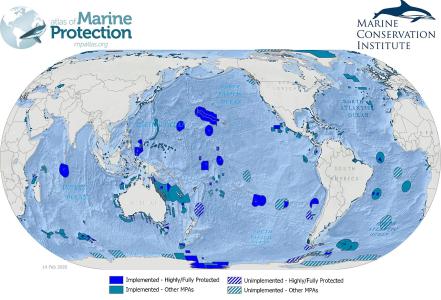
Marine protected areas as of 2020 (data from MPAtlas)
CNN reports that nearly 200 countries have agreed to a legally-binding High Seas Treaty to protect marine life in international waters, which cover around half of the planet’s surface, but have long been essentially lawless.
The agreement was signed on March 4 after two weeks of negotiations at the United Nations headquarters in New York ended in a mammoth final session of more than 36 hours – but it has been two decades in the making.

In 1886, lighthouse keeper John Walker’s last words to his wife Kate as he died died from pneumonia, were “Mind the light, Kate.” Kate, then 38 with two teenage children, took his final wish to heart. She minded the light — from that day on, every single day, for more than three decades.
Though standing only 4’10” tall and weighing around 100 pounds, Katherine Walker served as the keeper of the Robbins Reef Lighthouse for 35 years, following the death of her husband. In addition to the arduous task of keeping the light burning, she also rowed across the choppy waters of Upper New York harbor, a mile each way, to take her two children to school on Staten Island, weather permitting.
An immigrant from Germany, Kate met and married John Walker, who in 1883 was appointed keeper of the Robbins Reef Lighthouse. Kate found herself living on a reef inhabited solely by harbor seals. (Robbins Reef comes from the early Dutch name, “Robyns Rift,” or Seal Rocks.)
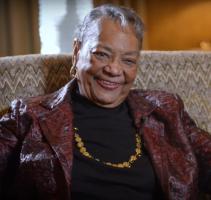 In honor of both March’s Women’s History Month & February’s Black History Month, an updated repost about the barrier-shattering naval engineer Raye Montague, who died at the age of 83 in 2018.
In honor of both March’s Women’s History Month & February’s Black History Month, an updated repost about the barrier-shattering naval engineer Raye Montague, who died at the age of 83 in 2018.
At the age of 7, she was inspired to become an engineer after she toured a captured World War II German submarine with her grandmother. As an African-American girl, however, she was told that becoming an engineer was simply not an option.
Thirty years later, Raye Montague became the first person to use a computer program to rapidly develop a preliminary ship design for the US Navy. The design process had previously taken the Navy two years. Montague completed the preliminary design of the Oliver Hazard Perry Class frigate in less than 19 hours. Her accomplishment revolutionized the way the Navy designs ships and submarines.
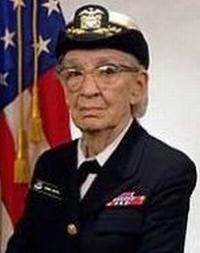 During Women’s History Month, it is good to remember and to honor Admiral Grace Hopper. Grace Hopper was a pioneering computer scientist and a United States Navy Rear Admiral. Hopper received a master’s degree and a Ph.D. in mathematics from Yale. She was nicknamed “Amazing Grace” and is often referred to as the “mother of computing.”
During Women’s History Month, it is good to remember and to honor Admiral Grace Hopper. Grace Hopper was a pioneering computer scientist and a United States Navy Rear Admiral. Hopper received a master’s degree and a Ph.D. in mathematics from Yale. She was nicknamed “Amazing Grace” and is often referred to as the “mother of computing.”
In October of 2020, the U.S. Naval Academy officially opened Hopper Hall, the academy’s new center for cybersecurity studies, named in her honor. The cybersecurity facility is the first building named after a woman at the three main service academies.
 I was stunned and saddened to read that shanty singer and folklorist Frank Woerner has died. I haven’t seen an obituary yet, but I came across a Facebook post by Alison Kelley who wrote, “It is with great shock and sorrow that my dear friend and folk father Frank Woerner has passed away suddenly.”
I was stunned and saddened to read that shanty singer and folklorist Frank Woerner has died. I haven’t seen an obituary yet, but I came across a Facebook post by Alison Kelley who wrote, “It is with great shock and sorrow that my dear friend and folk father Frank Woerner has passed away suddenly.”
